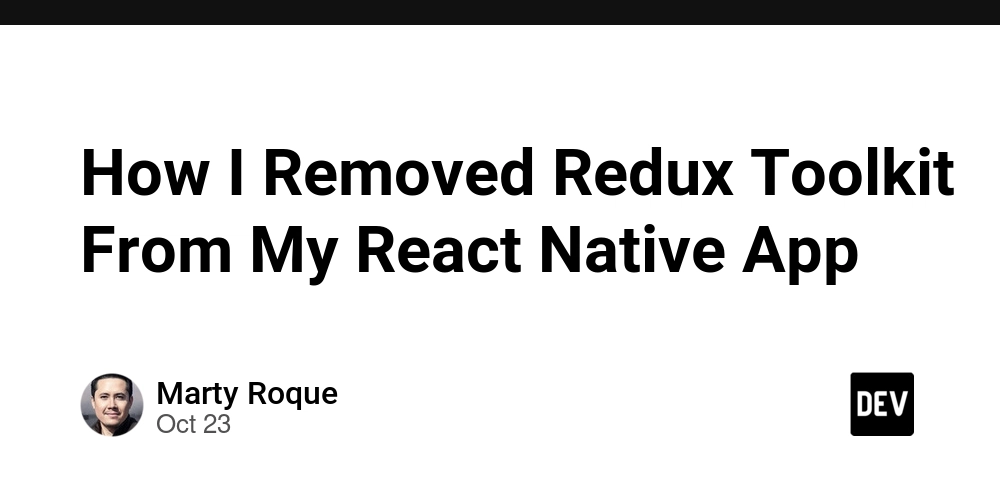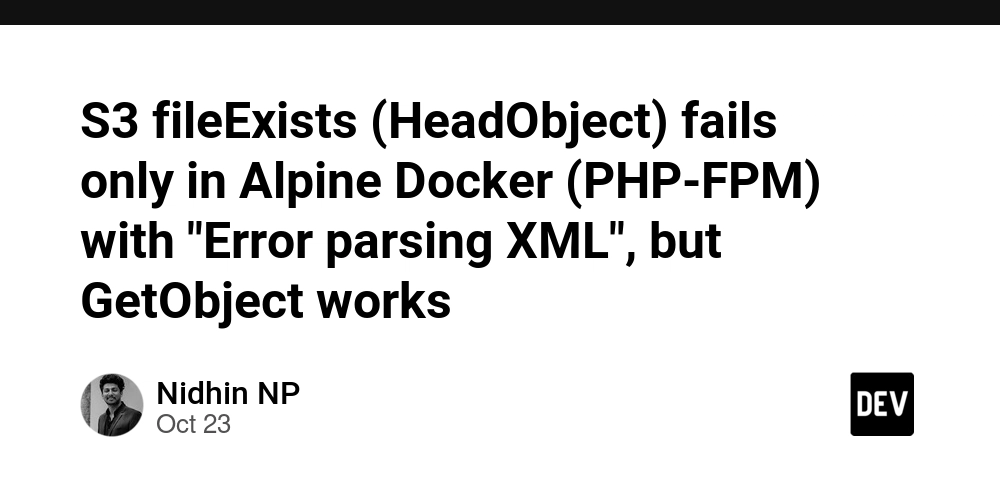I was building a budget tracking app for couples when I noticed something: the code to manage state was overwhelming.
Let me show you what I mean.
The Redux Toolkit Tax
Here’s what my budget period management looked like with Redux Toolkit:
periodSlice.ts:
import { createSlice, createAsyncThunk } from '@reduxjs/toolkit';
export const fetchPeriodSettings = createAsyncThunk(
'period/fetchSettings',
async (_, { rejectWithValue }) => {
try {
const response = await periodService.fetchPeriodSettings();
return response;
} catch (error) {
return rejectWithValue(error.message);
}
}
);
export const fetchTransactions = createAsyncThunk(
'period/fetchTransactions',
async (_, { rejectWithValue }) => {
try {
const transactions = await transactionService.fetchTransactions();
return transactions;
} catch (error) {
return rejectWithValue(error.message);
}
}
);
const periodSlice = createSlice({
name: 'period',
initialState: {
settings: null,
transactions: [],
periodGroups: { groups: [] },
activeGroupIndex: -1,
isLoading: false,
error: null,
},
reducers: {
setActiveGroupIndex: (state, action) => {
state.activeGroupIndex = action.payload;
},
nextGroup: (state) => {
if (state.activeGroupIndex < state.periodGroups.groups.length - 1) {
state.activeGroupIndex += 1;
}
},
previousGroup: (state) => {
if (state.activeGroupIndex > 0) {
state.activeGroupIndex -= 1;
}
},
},
extraReducers: (builder) => {
builder
.addCase(fetchPeriodSettings.pending, (state) => {
state.isLoading = true;
})
.addCase(fetchPeriodSettings.fulfilled, (state, action) => {
state.settings = action.payload;
state.isLoading = false;
})
.addCase(fetchPeriodSettings.rejected, (state, action) => {
state.error = action.payload;
state.isLoading = false;
})
// ... more cases for fetchTransactions
},
});
export const { setActiveGroupIndex, nextGroup, previousGroup } = periodSlice.actions;
export default periodSlice.reducer;
store.ts:
import { configureStore } from '@reduxjs/toolkit';
import periodReducer from './slices/periodSlice';
import transactionReducer from './slices/transactionSlice';
import sessionReducer from './slices/sessionSlice';
export const store = configureStore({
reducer: {
period: periodReducer,
transaction: transactionReducer,
session: sessionReducer,
},
});
export type RootState = ReturnType<typeof store.getState>;
export type AppDispatch = typeof store.dispatch;
hooks.ts:
import { useDispatch, useSelector } from 'react-redux';
import type { RootState, AppDispatch } from './store';
export const useAppDispatch = useDispatch.withTypes<AppDispatch>();
export const useAppSelector = useSelector.withTypes<RootState>();
That’s three files and 150+ lines just for one slice of state. And I still needed to:
- Set up selectors
- Handle async loading states manually
- Connect services to actions
- Export and import types everywhere
Redux Toolkit is better than vanilla Redux. But it still felt like I was writing infrastructure instead of features.
What I Actually Needed
Here’s the same period management logic:
PeriodStore.ts (everything in one place):
import { Store } from 'nucleux';
class PeriodStore extends Store {
// State atoms
public periodSettings = this.atom<PeriodSetting | null>(null);
public periodGroups = this.atom<GroupingResult>({ groups: [] });
public activeGroupIndex = this.atom(-1);
public isLoading = this.atom(false);
// Derived state
public activeGroup = this.deriveAtom(
[this.periodGroups, this.activeGroupIndex],
(periodGroups, index) => periodGroups.groups[index] ?? null
);
// Dependencies
private periodService = this.inject(PeriodService);
private transactionStore = this.inject(TransactionStore);
constructor() {
super();
this.loadPeriodSettings(true);
}
private async loadPeriodSettings() {
this.isLoading.value = true;
const settings = await this.periodService.fetchPeriodSettings();
this.periodSettings.value = settings;
if (settings) {
await this.transactionStore.fetchTransactions();
}
this.isLoading.value = false;
}
private onTransactionsChange(transactions: Transaction[]) {
// Logic to handle transactions change
}
public nextGroup() {
const maxIndex = this.periodGroups.value.groups.length - 1;
if (this.activeGroupIndex.value < maxIndex) {
this.activeGroupIndex.value += 1;
}
}
public previousGroup() {
if (this.activeGroupIndex.value > 0) {
this.activeGroupIndex.value -= 1;
}
}
}
export default PeriodStore;
One file. One class. All the logic in one place. No actions, no reducers, no thunks, no extraReducers, no builder pattern.
Using It In Components
Before (Redux Toolkit):
import { useAppDispatch, useAppSelector } from '@/store/hooks';
import { fetchPeriodSettings, nextGroup, previousGroup } from '@/store/slices/periodSlice';
function BudgetScreen() {
const dispatch = useAppDispatch();
const activeGroup = useAppSelector((state) => state.period.periodGroups.groups[state.period.activeGroupIndex]);
const isLoading = useAppSelector((state) => state.period.isLoading);
useEffect(() => {
dispatch(fetchPeriodSettings());
}, [dispatch]);
const handleNext = () => dispatch(nextGroup());
const handlePrevious = () => dispatch(previousGroup());
return (
<View>
{isLoading ? <Loader /> : <PeriodView group={activeGroup} />}
<Button onPress={handlePrevious} title="Previous" />
<Button onPress={handleNext} title="Next" />
View>
);
}
After:
import { useStore, useValue } from 'nucleux';
import PeriodStore from '@/stores/PeriodStore';
function BudgetScreen() {
const periodStore = useStore(PeriodStore);
const activeGroup = useValue(periodStore.activeGroup);
const isLoading = useValue(periodStore.isLoading);
return (
<View>
{isLoading ? <Loader /> : <PeriodView group={activeGroup} />}
<Button onPress={periodStore.previousGroup} title="Previous" />
<Button onPress={periodStore.nextGroup} title="Next" />
View>
);
}
No dispatch. No action creators. No selectors with arrow functions. Just call methods directly on the store.
The Re-Render Win
Here’s where it got interesting. With Redux Toolkit, when periodSettings changed, every component using useAppSelector would re-evaluate its selector function. Even components that didn’t care about period settings.
My settings screen subscribed to just the session:
function SettingsScreen() {
const session = useValue(sessionStore.session);
// Only re-renders when session changes, not when period settings change
}
My budget screen subscribed to period data:
function BudgetScreen() {
const activeGroup = useValue(periodStore.activeGroup);
// Only re-renders when activeGroup changes, not when session changes
}
Each component only re-renders when its specific atom changes. Not when the store changes. Not when the slice changes. Just the atom it cares about.
Dependency Injection Without Context
With Redux Toolkit, I had services living outside the store. To use them in thunks, I either imported them directly (tight coupling) or passed them as arguments (tedious).
Now stores can inject other stores and services:
class TransactionStore extends Store {
// Inject the service this store needs
private transactionService = this.inject(TransactionService);
public transactions = this.atom<Transaction[]>([]);
async fetchTransactions() {
const data = await this.transactionService.fetchTransactions();
// ...
this.transactions.value = data;
}
}
class PeriodStore extends Store {
// Inject another store
private transactionStore = this.inject(TransactionStore);
constructor() {
super();
// React to changes in another store
this.watchAtom(
this.transactionStore.transactions,
(transactions) => {
// Recalculate periods when transactions change
this.groupPeriods(transactions);
}
);
}
}
The IoC container handles instantiation. Stores and services are singletons. Dependencies just work.
The Expo Router Reality
Here’s what my app/_layout.tsx actually looks like:
import { Stack } from "expo-router";
import SessionProvider from "@/providers/SessionProvider";
export default function RootLayout() {
return (
<SessionProvider>
<Stack screenOptions={{ headerShown: false }}>
<Stack.Screen name="(tabs)" />
<Stack.Screen name="(auth)" />
<Stack.Screen name="(screens)" />
Stack>
SessionProvider>
);
}
I still have one provider: SessionProvider. Not for state management—for Expo Router’s splash screen and navigation control:
export default function SessionProvider({ children }: SessionProviderProps) {
const { initialized, session } = useNucleux(SessionStore);
useEffect(() => {
if (!initialized) return;
// Route based on session state
if (session) {
router.replace("/(tabs)");
} else {
router.replace("/(auth)");
}
}, [session, initialized]);
const onLayoutRootView = useCallback(async () => {
if (initialized) {
await SplashScreen.hideAsync();
}
}, [initialized]);
if (!initialized) {
return null;
}
return (
<SessionContext.Provider value={{ session, onLayoutRootView }}>
{children}
SessionContext.Provider>
);
}
This provider doesn’t manage state. It reads state from SessionStore and controls navigation. The state lives in Nucleux, not Context.
Modern Expo apps often end up with providers for:
- Session management (auth routing)
- Theme/appearance
- Localization
- Safe area context (from React Native)
- Navigation container
That’s 5+ providers in _layout.tsx before you add any state management. With atomic state in stores, you don’t add more providers for state.
What About Persistence?
Redux Toolkit needs redux-persist. That’s another library, more config, wrapper components, and migration logic.
With atomic state:
class UserPreferencesStore extends Store {
theme = this.atom('light', {
persistence: { persistKey: 'theme' }
});
currency = this.atom('USD', {
persistence: {
persistKey: 'currency',
storage: AsyncStorage // React Native's AsyncStorage
}
});
}
It automatically persists and rehydrates. One line per atom.
The Migration Path
I didn’t rewrite everything at once. Here’s how I did it:
Week 1: Created SessionStore for auth. Left Redux for everything else.
Week 2: Created TransactionStore. Transactions now lived in atomic state, periods still in Redux.
Week 3: Created PeriodStore. Now PeriodStore could inject TransactionStore and watch for changes.
Week 4: Deleted Redux entirely.
Each store was self-contained. The migration was:
- Create the store class
- Move logic from slice into store methods
- Replace
useAppSelectorwithuseValue - Replace
dispatch(action())withstore.method() - Delete the slice file
The hardest part was deleting 500 lines of working Redux code.
What I Learned
Redux Toolkit made Redux better. But it still carries the original Redux architecture:
- Actions as the API (you call action creators, not methods)
- Reducers for updates (even with Immer, you’re writing reducers)
- Separate selector layer (useAppSelector everywhere)
- External async handling (thunks)
- Manual typing (type RootState, type AppDispatch)
The atomic pattern flips this:
- Stores as the API (you call methods directly)
- Atoms for updates (just set
.value) - No selector layer (subscribe to atoms directly)
- Internal async handling (methods are just async)
- Inferred typing (TypeScript figures it out)
The Results
Before:
- 5 providers in
_layout.tsx(Session, Redux, Theme, Safe Area, Stack) - ~1200 lines across slice files, store config, and hooks
- Manual selector optimization with reselect
- 8-12 files per feature (slice, selectors, thunks, types, hooks)
After:
- 1 provider in
_layout.tsx(just SessionProvider for routing) - ~600 lines of store code (just the stores)
- Automatic atomic updates
- 3-4 files per feature (store, service, types, components)
Developer Experience: New features went from taking 2-3 days to taking hours. No more “which file does this go in?” Everything for a feature lives in its store.
Why This Worked For Me
I’m not saying Redux Toolkit is wrong for everyone. But if you’re:
- Building an Expo/React Native app
- Managing complex, interconnected state
- Writing more Redux boilerplate than business logic
- Wanting built-in persistence
- Looking for better TypeScript inference
You might want to try atomic state management.
I built this pattern into a library called Nucleux because I kept using it across projects. But the concepts work without the library:
- Atoms over global state trees
- Classes over actions/reducers
- Dependency injection over imports
- Direct method calls over dispatch
The biggest win wasn’t code reduction—it was clarity. My budget feature’s logic lives in PeriodStore. My transaction logic lives in TransactionStore. When stores need to communicate, they inject each other. No indirection, no dispatch, no selectors.
Try It Yourself
Want to see if this works for your app? Start small:
- Pick one Redux slice (sessions work well)
- Convert it to a store class
- Compare the code
If you like it, keep going. If not, they can coexist during evaluation.
The repo with examples: github.com/martyroque/nucleux
Demo sandbox: codesandbox.io/p/sandbox/nucleux-react-qw58s4
Would love to hear your thoughts—especially if you’ve hit similar challenges with Redux Toolkit.
Building Duetto – a privacy-first budget app for couples. The entire app uses atomic state management, and it’s changed how fast I can ship features.



